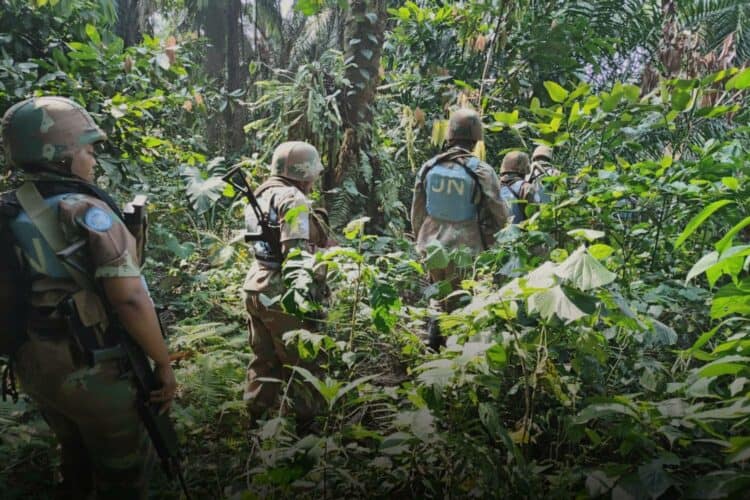Two South African National Defence Force (SANDF) soldiers were killed in a mortar bomb attack that targeted an SA military base in Eastern Congo, on Wednesday.
Mortar bomb attack kills two SANDF soldiers
In a statement, the South African army confirmed the incident occurred at approximately 13:30. While explicit details about the incident were kept out of the SANDF media statement, the army did hint at the likelihood that the SANDF contingent was caught off guard when the high-arching ballistics trajectory made landfall.
“Two SANDF soldiers were killed in a mortar bomb attack that targeted a South African continent military base in Eastern Congo,” the Defence Ministry noted.
South Africa has deployed a contingent of 2 900 soldiers as part of its commitment to the South African Mission in the DRC (SAMIDRC).
This deployment aims to assist the DRC government in its longstanding struggle to bring peace, security, and stability to a region beset by conflict for decades.
The SANDF’s mission in the DRC is critical, with a mandate extending until December 2024.
The Forgotten War in DR Congo
The decades-long conflict in Eastern Congo, known as the Great Lakes crisis, is a complex and multifaceted struggle that has its roots in a mix of ethnic tensions, political instability, and the battle over the region’s vast mineral wealth.
This conflict, often characterised by a series of wars, insurgencies, and episodes of violence, has resulted in widespread human suffering, including loss of life, displacement of communities, and human rights abuses.
The conflict’s origins can be traced back to the early 1990s, following the end of the Cold War, when the region’s political and ethnic tensions were exacerbated by a wave of refugees from the Rwandan Genocide of 1994.
The influx of Hutu refugees, including those responsible for the genocide, into Eastern Congo, then known as Zaire, destabilised the region and sowed the seeds for future conflicts.
The presence of these refugees and the activities of the Rwandan Hutu militia groups (Interahamwe) in Zaire led Rwanda to support rebel groups seeking to overthrow the long-standing dictatorship of Mobutu Sese Seko.
The First Congo War (1996-1997) saw the alliance of Rwandan, Ugandan, and Congolese rebel forces overthrowing Mobutu, leading to Laurent-Désiré Kabila’s ascent to power.
However, the alliance soon fractured, leading to the Second Congo War (1998-2003), sometimes referred to as the African World War due to the involvement of multiple African nations.
The war officially ended with the signing of the Sun City Agreement in 2003, but violence and instability have persisted, fuelled by over 40 armed groups vying for control over territories and mineral resources.
Eastern Congo’s mineral wealth, including coltan, diamonds, gold, and copper, has been both a curse and a catalyst for conflict.
Various armed groups, including the Democratic Forces for the Liberation of Rwanda (FDLR), the M23 rebel group, and numerous Mai-Mai militias, have sought control over mining areas to fund their operations, leading to a cycle of violence and exploitation.
Efforts to bring peace to the region have included international and regional interventions, peacekeeping missions (notably MONUSCO, the United Nations Organisation Stabilisation Mission in the Democratic Republic of the Congo), and various peace agreements.
However, the implementation of these agreements has been challenging, and the region remains mired in a state of semi-permanent conflict.
The human toll of the conflict in Eastern Congo is staggering, with millions dead and millions more displaced.
The violence has been marked by widespread atrocities, including mass killings, rape, and the recruitment of child soldiers.
Despite the rich cultural and natural heritage of the region, Eastern Congo’s development has been severely hampered by ongoing conflict, leaving its population among the poorest in the world.






